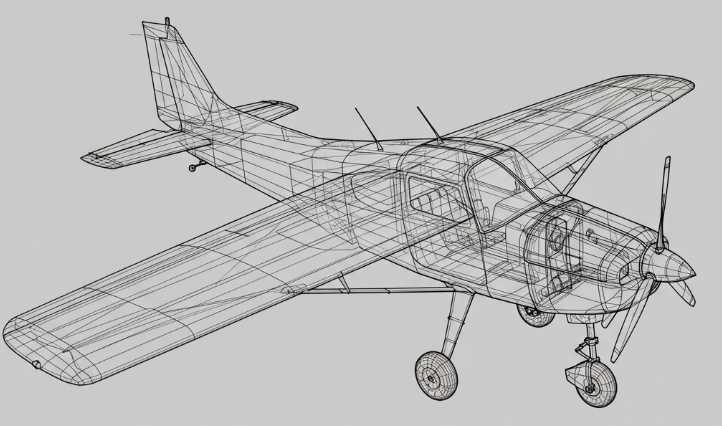Every month, I give a talk at the Air Force Academy about transitioning from military service to entrepreneurship—becoming your own boss after separation. I often use the analogy of an aircraft barreling down the runway to describe the startup investment required to launch different types of businesses. However, when I read Donald Miller’s book How to Grow Your Small Business, I was struck by how well his airplane analogy explained how all the different parts of a business work together. Since I believe in the Feynman Technique—breaking down complex concepts into simple, easy-to-understand explanations—I found this extended airplane analogy to be an excellent way to help my clients grasp how all the moving parts necessary to start and run a business need to work in synergy.
You see, starting and operating a business is a lot like taking off and flying an airplane. Everything has to work together seamlessly to achieve takeoff and to stay airborne long enough to reach the destination. If one component fails or isn’t functioning properly, the business, like an airplane, will crash.
Let’s break it down.
The Cockpit (Leadership & Vision)
The cockpit is where the pilot sits, making key decisions and steering the aircraft toward its destination. In business, this represents the company’s leadership and vision. A strong leader, like a skilled pilot, provides direction, keeps the team focused, and ensures that everything stays on course. Just as a pilot relies on instruments to navigate and monitor altitude, speed, and fuel levels, business leaders use key performance indicators (KPIs), financial reports, and market data to guide their decisions. Without leadership and clear metrics to track progress, an airplane—or a business—will struggle to maintain control and direction.
Before taking off, pilots go through a pre-flight checklist to ensure the aircraft is in top condition and that the weather along the route is suitable for a safe journey. Ignoring weather conditions could lead to turbulence, delays, or even forced landings. In business, this pre-flight routine is akin to having a business plan. A well-structured business plan outlines objectives, strategies, risks, and contingencies—ensuring the company is not only prepared internally but also aware of external conditions that could impact its journey. Just as pilots adjust their flight plans based on weather forecasts, business owners must assess market trends, economic conditions, and potential disruptions to navigate effectively. Without this preparation, a business is essentially attempting to take off not knowing if all systems are “go” or if a storm will affect the flight plan.
The Engine (Marketing) – The Power Source
Marketing is the engine of a business, but an engine alone isn’t enough. The engine generates rotational mechanical energy, but without a propeller—sales—to harness and convert that energy into thrust, there’s no forward motion. Similarly, marketing creates awareness, but without sales to convert that energy into action, the business remains grounded.
Just like aircraft engines need regular maintenance, marketing efforts require constant adjusting to keep them operating efficiently. Whether through content marketing, brand marketing, or word-of-mouth talk triggers, marketing provides the energy. However, without the right systems in place to transform that energy into thrust, a business—like an engine without a propeller—will simply spin in place, never gaining the forward momentum needed to create the lift for takeoff.
Moreover, even the best engine and propeller won’t work without fuel—cash—to keep them running, or throttle input—strategic direction—from the cockpit to control power and efficiency. Just as an aircraft needs additional thrust to take off, which means higher fuel consumption and a steady hand on the controls, businesses need strong leadership to manage their resources and guide them through their critical climb toward success.
The Propeller (Sales) – Converting Power into Motion
While the engine provides the rotational mechanical energy, it must be coupled to a propeller to convert that power into forward motion. The pitch of the propeller represents the sales process—how efficiently a business converts leads into paying customers. Pitch refers to the angle at which the propeller blades cut through the air. With a higher pitch, the propeller grabs more air to generate greater thrust. However, increasing pitch also adds load to the engine, requiring nuanced control from the cockpit to keep engine speed and pitch in sync and working efficiently.
Furthermore, higher engine revolutions per minute (RPM) and greater pitch are needed to achieve takeoff speed. A steady hand at the controls is necessary to ensure a smooth climb. If the propeller’s pitch is too aggressive (hard selling), it will create excessive load on the engine, potentially stalling it. On the other hand, too little pitch will cause the engine to spin freely without producing enough significant forward movement. The key is to find just the right balance, where sales efforts efficiently convert leads into customers without overloading the system or wasting energy.
The Wings (Products & Services) – Creating Lift
The wings of an airplane generate lift, allowing it to take flight. Similarly, a business’s products or services give it the ability to rise above the competition. However, the effectiveness of the wings depends on their design and how well they align with the airplane’s other systems. Some wings are built primarily for lift, while others are streamlined for speed. In business, this means that products or services must be designed to fit the pace and scale of the company’s operations.
The wings also need to be appropriately matched to the fuselage’s carrying capacity. If the wings are too small, there won’t be enough lift to keep the business in the air. If they are too large, they add unnecessary drag and reduce efficiency. Just as an airplane’s wings must be optimized according to its size and purpose, a business must align its product offerings with its ability to sustain and scale operations effectively.
The Fuselage (Operations & Overhead) – Holding Everything Together
The fuselage is the part of the airframe that holds the cargo, which is why the airplane exists. In business, operations and expenses are the equivalent—forming the structural framework that supports the business’s mission. Just as an aircraft must maintain a proper balance between its weight, thrust, and lift, a business must carefully manage its operations and overhead. Too much cargo can prevent a plane from ever leaving the ground, just as excessive overhead can keep a business from reaching breakeven and taking off.
If the startup expenses are very high, the business will require an extremely long runway, demanding additional cash infusions to extend the runway to achieve flight. Without sufficient funding, a business risks running out of runway and crashing before ever becoming self-sustaining. If extending the runway isn’t an option, the only way to avoid disaster is to reduce weight—forcing the business to dump their cargo, and abandon their resources and overhead costs on the runway just to get airborne.
The fuselage must also be in balance with the wings and engine. If it’s too thin and light, it may not provide the necessary structural support for the rest of the aircraft. Just like an airplane with a weak airframe, a business with minimal overhead may struggle to handle the forces of rapid growth. In a banked turn, the increased G-forces exerted on the airframe could rip the wings off, just as an expense-heavy business could collapse under pressure. On the other hand, if the fuselage is too thick and heavy, it creates unnecessary drag, requiring a more powerful engine, larger propeller, and bigger wings to compensate—while also demanding even more runway to take off. Similarly, an overly complex business structure with bloated expenses demands significantly higher amounts of investments to achieve breakeven and more revenue just to stay airborne.
A well-balanced business structure ensures that costs are optimized, allowing for an efficient launch and continued operations—just as an airplane must maintain the right balance between weight, lift, and thrust to take off and fly smoothly and efficiently.
Runway (Investment) and Fuel (Cash Flow) – Achieving and Sustaining Flight
A plane can’t take off without a long enough runway, just as a business can’t succeed without enough startup investment to reach breakeven. The runway represents the money available to the business before profitability is achieved. The heavier the business—meaning the higher the expenses—the longer the runway required. If the runway is too short, the business won’t gain enough momentum to take off. Entrepreneurs have two choices in this situation: reduce weight (cut expenses) or secure additional startup investment to extend the runway.
Even after takeoff, a plane can’t stay in the air without fuel, just as a business can’t run without cash flow. Fuel management is critical in aviation, and the same applies to business finances. Entrepreneurs must ensure they have enough cash to sustain operations while optimizing efficiency. Running out of cash mid-flight—just like running out of fuel—can lead to disaster.
By carefully managing both runway (breakeven) and fuel (cash flow), businesses can ensure a smooth takeoff and a stable climb toward success.
Achieving and Maintaining Flight
For a business to achieve steady growth, all components must work together seamlessly:
- Stay on course with a clear vision (leadership) – Just as a pilot keeps a plane on track, business leaders must steer their company toward long-term goals.
- Maintain the engine (marketing) – Regularly refine marketing strategies to keep attracting customers.
- Adjust the propeller pitch (sales techniques) – Optimize the sales process to convert leads efficiently.
- Ensure the wings are strong (valuable products/services) – Offer products or services that keep the business soaring.
- Keep the fuselage sturdy and cargo manageable (operations and overhead) – Maintain efficient systems and strong organizational structure.
- Monitor fuel levels (investments and cash flow) – Keep an eye on financial health to ensure sustainability.
Conclusion
The airplane analogy makes it easy to see how different parts of a business must work in harmony. Without leadership (cockpit), the business lacks direction. Without marketing (engine), there’s no energy. Without sales (propeller), there’s no thrust to create efficient movement. Without strong products or services (wings), the business won’t stay in the air. Cash (fuel) and operation and expenses (fuselage/cargo) all play crucial roles in keeping the business flying smoothly.
This framework has been invaluable in helping clients understand the complexities of running a business. Just like learning to fly, business success takes practice, skill, and continuous adjustments. With the right balance, any entrepreneur can keep their business soaring toward new heights.
How can you apply the airplane analogy to your business startup?












